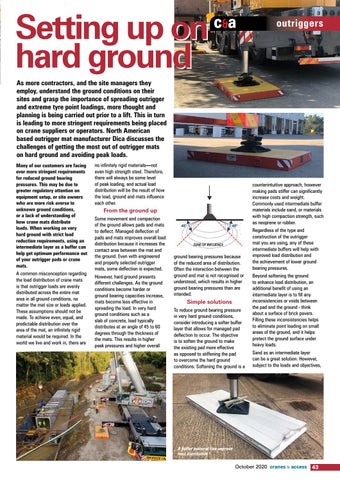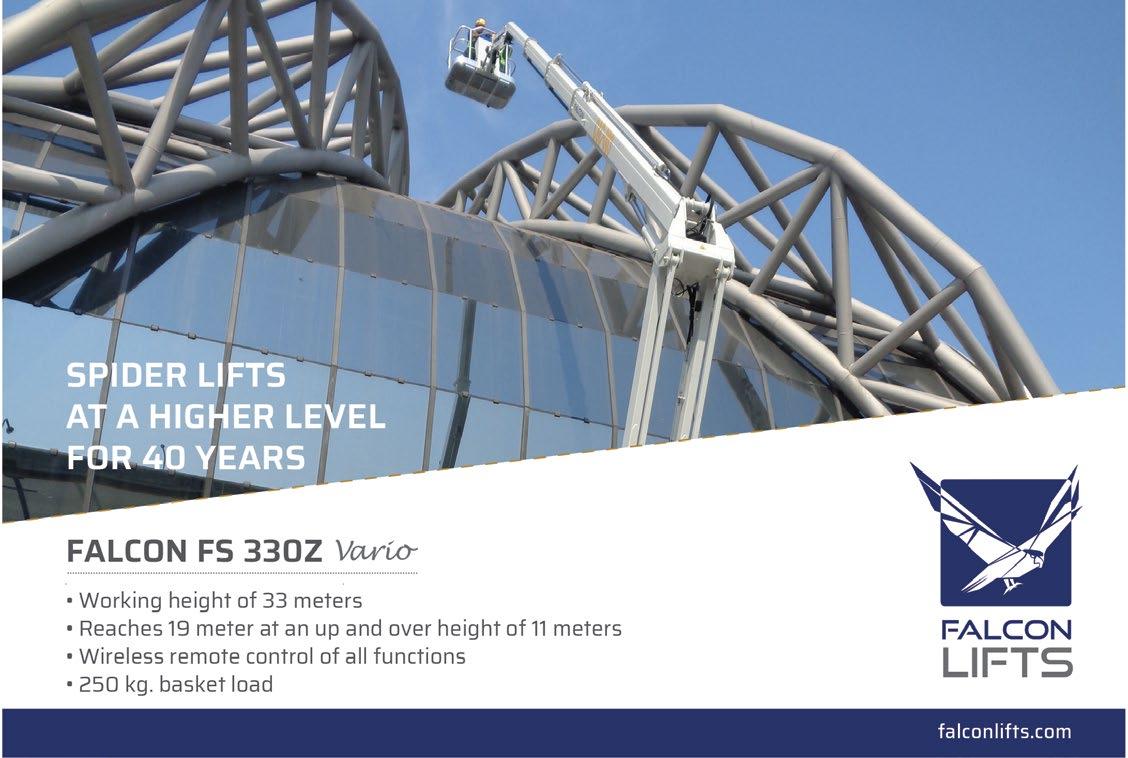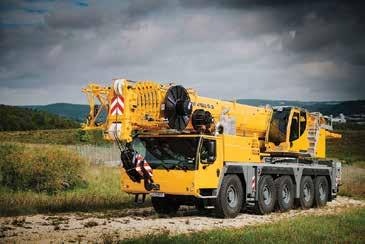Setting up on hard ground
c&a
outriggers
As more contractors, and the site managers they employ, understand the ground conditions on their sites and grasp the importance of spreading outrigger and extreme tyre point loadings, more thought and planning is being carried out prior to a lift. This in turn is leading to more stringent requirements being placed on crane suppliers or operators. North American based outrigger mat manufacturer Dica discusses the challenges of getting the most out of outrigger mats on hard ground and avoiding peak loads. Many of our customers are facing ever more stringent requirements for reduced ground bearing pressures. This may be due to greater regulatory attention on equipment setup, or site owners who are more risk averse to unknown ground conditions, or a lack of understanding of how crane mats distribute loads. When working on very hard ground with strict load reduction requirements, using an intermediate layer as a buffer can help get optimum performance out of your outrigger pads or crane mats. A common misconception regarding the load distribution of crane mats is that outrigger loads are evenly distributed across the entire mat area in all ground conditions, no matter the mat size or loads applied. These assumptions should not be made. To achieve even, equal, and predictable distribution over the area of the mat, an infinitely rigid material would be required. In the world we live and work in, there are
no infinitely rigid materials—not even high strength steel. Therefore, there will always be some level of peak loading, and actual load distribution will be the result of how the load, ground and mats influence each other.
counterintuitive approach, however making pads stiffer can significantly increase costs and weight. Commonly used intermediate buffer materials include sand, or materials with high compaction strength, such as neoprene or rubber.
From the ground up Some movement and compaction of the ground allows pads and mats to deflect. Managed deflection of pads and mats improves overall load distribution because it increases the contact area between the mat and the ground. Even with engineered and properly selected outrigger mats, some deflection is expected. However, hard ground presents different challenges. As the ground conditions become harder or ground bearing capacities increase, mats become less effective in spreading the load. In very hard ground conditions such as a slab of concrete, load typically distributes at an angle of 45 to 60 degrees through the thickness of the mats. This results in higher peak pressures and higher overall
ZONE OF INFLUENCE
ground bearing pressures because of the reduced area of distribution. Often the interaction between the ground and mat is not recognised or understood, which results in higher ground bearing pressures than are intended.
Simple solutions To reduce ground bearing pressure in very hard ground conditions, consider introducing a softer buffer layer that allows for managed pad deflection to occur. The objective is to soften the ground to make the existing pad more effective as opposed to stiffening the pad to overcome the hard ground conditions. Softening the ground is a
Regardless of the type and construction of the outrigger mat you are using, any of these intermediate buffers will help with improved load distribution and the achievement of lower ground bearing pressures. Beyond softening the ground to enhance load distribution, an additional benefit of using an intermediate layer is to fill any inconsistencies or voids between the pad and the ground - think about a surface of brick pavers. Filling these inconsistencies helps to eliminate point loading on small areas of the ground, and it helps protect the ground surface under heavy loads. Sand as an intermediate layer can be a great solution. However, subject to the loads and objectives,
A buffer material can improve load distribution
October 2020 cranes & access
43 41


















